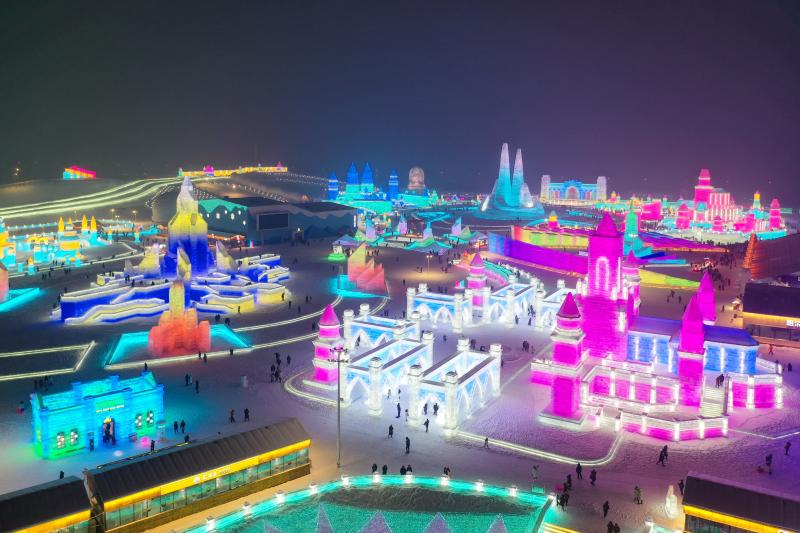China's booming snow and ice tourism industry
- By Itamar Manes
 0 Comment(s)
0 Comment(s) Print
Print E-mail China.org.cn, January 29, 2020
E-mail China.org.cn, January 29, 2020

For years, China has served as one of the most popular travel destinations for global tourism. The vast landscapes of the country offer countless geological, historical, and natural wonders, with the highest number of listed UNESCO World Heritage Sites, to experience.
However, China's tourism industry for both international and domestic travelers has for a long time been mostly focused in either China's attractive first-tier cities – known more for their appeal as modernistic centers of shopping and urban attractions, or in China's southwestern provinces such as Sichuan and Yunnan, where there are countless natural parks and phenomenal landscapes appealing to nature lovers.
One location that has been left somewhat untouched for a long time, however, is northeast China, involving three provinces of Liaoning, Jilin and Heilongjiang. Due to their far north location, they are known notoriously for their unforgiving winters, with freezing temperatures reaching as low as minus 40 degrees Celsius.
Yet, these provinces, particularly Jilin and Heilongjiang, have long offered viable alternatives to travelers seeking a more unique "winterish" experience than commonly seen in the rest of China. Winter-sport lovers favor the region as well, for its world-level facilities and resorts for skiing and other similar sports.
Heilongjiang is perhaps the most well-known for winter-travel, as it holds the annual Ice and Snow Festival in its capital city of Harbin, that sees parts of the city turn into a breathtaking display of colorfully-lit ice sculptures and buildings, with countless unique activities offered. Understandably, however, the remoteness and harsh conditions of the region have caused it to be missed by many.
Fortunately, in the last two years, the region has seen a sudden surge in incoming tourism. Commonly labeled as "ice and snow tourism," the trend is seeing a tremendous increase due to 2022 Winter Olympics to be held in Beijing and Zhangjiakou city in Hebei province.
In fact, according to reports from the China Tourism Academy, the industry saw its first serious boom about a year ago, in the 2018-2019 winter season, with 224 million tourists, almost a 14% increase from the previous year. The next two years are expected to see even larger numbers, and revenues almost doubling to around 680 billion yuan.
The region is seeing more and more developments aimed at catering to the massive increase. Besides Harbin's beloved Ice and Snow Festival, which has been in existence for more than 30 years, other cities in Heilongjiang and Jilin have jumped on the train, and given rise to events such as Changchun's Snow and Ice Industry Expo, which offers various activities in its eight massive themed pavilions.
Beijing has already opened its own contributions to the upcoming Olympic events, with modifications to the 2008 Olympics' Bird's Nest and Water Cube sport centers, and already offering various activities in the existing winter festival – Meet in 2022 Ice and Snow Cultural Festival.
These new developments have reached further into Tianjin and Hebei, which are also partaking in the new tourism trend by initiating similar winter festivals and snow-based entertainment centers. This wave has even crossed to the far west of Xinjiang and Inner Mongolia, which are also looking to join in and profit from winter tourism, and strive to compete in this new economic opportunity.
Even in the southern regions, where the cold and snow are virtually unknown, new constructions of indoor ice and snow themed parks and centers have sprung up.
In efforts to further promote and revitalize these additions to the "snow economy," many regulations are being introduced by regional governments to help accommodate and optimize market development. This trend may be defining the "golden era" of China's northeast tourism development, and the future of winter ice and snow tourism in the Asian arena.
Itamar Manes is an Israeli freelancer based in Dalian, China.
Opinion articles reflect the views of their authors only, not necessarily those of China.org.cn.
If you would like to contribute, please contact us at opinion@china.org.cn.






Go to Forum >>0 Comment(s)